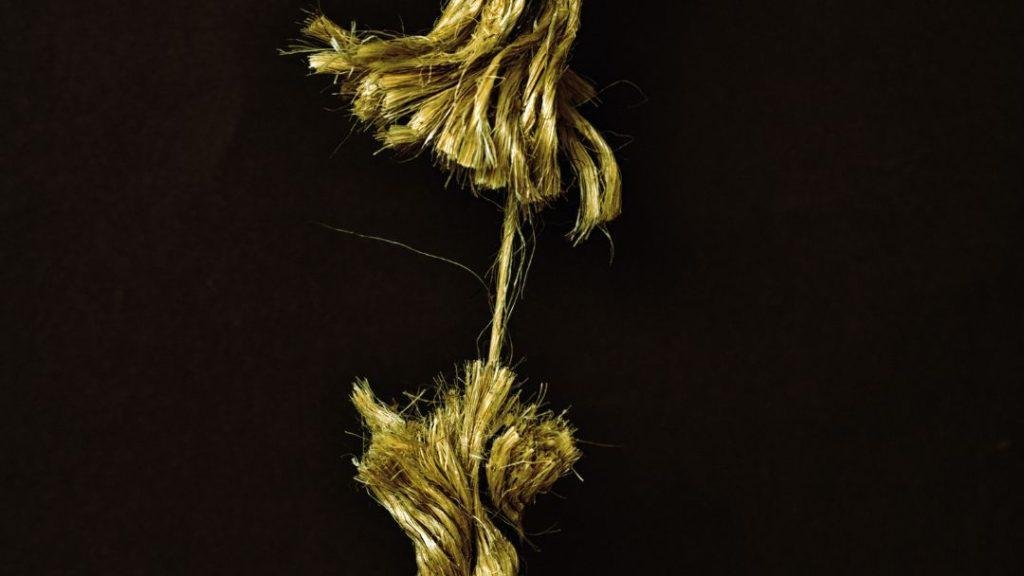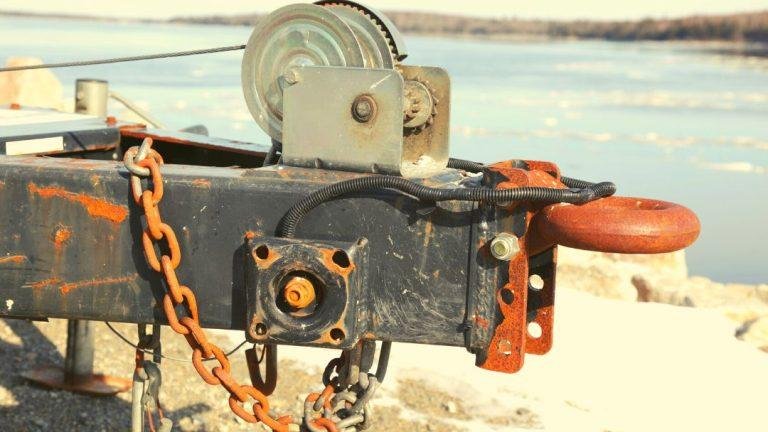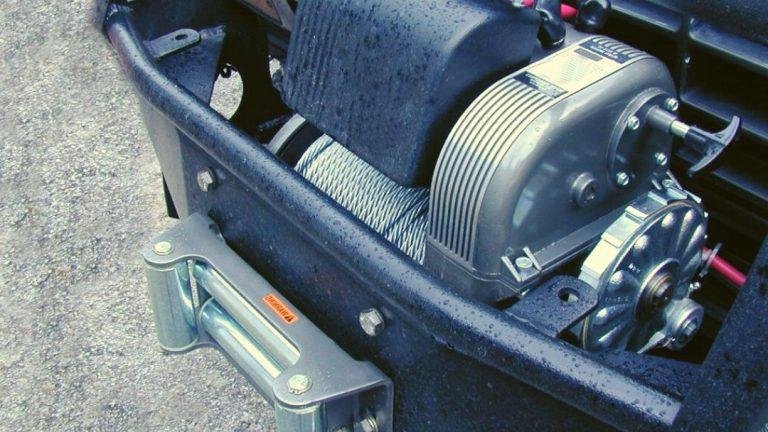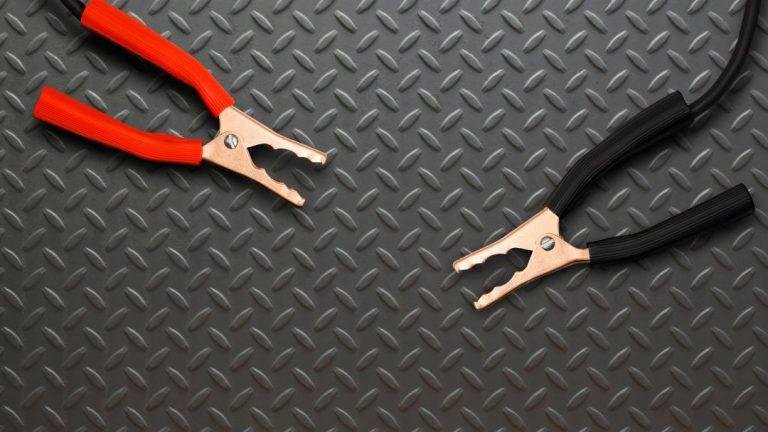The winch cable may be breaking due to overloading or wear and tear from frequent use. It is important to check the winch’s capacity and use it within limits to prevent cable breakage.
Additionally, regular inspection and maintenance of the winch cable can help detect any signs of damage or weakness.
What Causes Winch Cable Breakage?
Winch cable breakage occurs due to several factors including excessive tension, overloading, rust or corrosion, worn-out cable, abrupt jerks, and improper winding. Regular inspection and maintenance can help prevent these breakages and ensure a smooth winching experience.
Winch cable breakage can be frustrating and can significantly limit the effectiveness of your winching operations. Understanding the causes of winch cable breakage can help you prevent it from happening in the future. Here are a few common reasons your winch cable may keep breaking:
Material Weaknesses:
- Poor quality steel: Low-grade steel cables are more prone to breaking under stress.
- Corrosion: Rust and corrosion weaken the strength of the cable, making it more susceptible to breakage.
- Wear and tear: Continuous use and exposure to rough conditions can cause the cable to weaken over time.
Overloading The Winch:
- Exceeding weight capacity: Overloading the winch by pulling a load that exceeds its weight capacity puts excessive strain on the cable, leading to breakage.
- Abrupt force application: Applying sudden and extreme force to the winch can overload the cable and cause it to snap.
Improper Cable Installation:
- Incorrect spooling: Improperly spooled cable can create weak spots, leading to breakage when under tension.
- Twisting and kinking: Twisting or kinking the winch cable during installation can cause internal damage, reducing its strength and durability.
- Insufficient tension: Insufficient tension on the cable can result in it slipping off the drum or getting snagged, increasing the chances of breakage.
By paying attention to these common causes of winch cable breakage, you can ensure the longevity and reliability of your winching equipment. Regular maintenance, including cleaning, lubricating, and inspecting the cable for signs of wear, can also help prevent unexpected breakages during crucial operations.

The Role Of Material Weaknesses In Cable Breakage
Material weaknesses play a crucial role in the recurring issue of winch cable breakage. Understanding and addressing these weaknesses is essential to prevent further cable failures and ensure smooth operations.
Understanding The Composition Of Winch Cables
Winch cables play a vital role in ensuring the smooth operation of winches. However, it can be frustrating when these cables keep breaking. One of the key factors contributing to cable breakage is material weaknesses. To understand this issue better, let’s explore the composition of winch cables.
- Winch cables are typically made of durable materials such as steel or synthetic fibers.
- Steel cables are composed of multiple strands of high-strength steel wire twisted together, while synthetic cables are made of strong synthetic fibers woven into a rope-like structure.
- The choice of material depends on the specific application and required strength.
Identifying Common Material Weaknesses
Material weaknesses in winch cables can arise due to various factors. Some common weaknesses to watch out for include:
- Corrosion: Steel cables are prone to corrosion when exposed to moisture and can weaken over time. It’s essential to regularly inspect and maintain your winch cables to prevent rust buildup.
- Wear and tear: Continuous usage and exposure to harsh conditions can cause abrasion, fraying, or surface degradation, compromising the cable’s strength. Regular inspections and replacing worn-out cables are crucial.
- Overloading: Subjecting winch cables to excessive loads beyond their rated capacities can strain the material and increase the risk of failure. It’s important to adhere to the load limits specified by the manufacturer.
Impact Of Material Weaknesses On Cable Strength
Material weaknesses can significantly affect the strength and reliability of winch cables. Here are some key points to consider:
- Reduced load capacity: Weak spots in the cable’s material can lower its overall load-bearing capacity, making it more prone to breakage. Regular maintenance and inspections can help identify and address these weaknesses promptly.
- Safety concerns: Weakened winch cables pose safety risks to both users and the surrounding environment. Cable failure during operation can lead to accidents, property damage, or injury. Regular maintenance and addressing material weaknesses are crucial for safe winch operation.
- Costly replacements: Constantly replacing broken winch cables can be expensive and time-consuming. By understanding and addressing material weaknesses, you can prolong the lifespan of your cables and save on replacement costs.
Material weaknesses can have a significant impact on the strength and durability of winch cables. Regular inspection, maintenance, and addressing common weaknesses such as corrosion, wear and tear, and overloading are essential to ensure safe and efficient winch operations. By investing in high-quality cables and taking necessary precautions, you can minimize the risk of cable breakage and enhance the longevity of your winching system.
Avoiding Cable Breakage Through Proper Winch Usage
Proper winch usage is crucial to avoid cable breakage. Discover the reasons behind why winch cables keep breaking and learn how to prevent it for seamless operations.
A winch is an essential tool for any off-road enthusiast or outdoor adventurer. It’s a powerful device designed to pull and lift heavy loads with ease. However, if you’ve experienced the frustration of your winch cable breaking, you know how important it is to use your winch correctly to avoid unnecessary cable breakage.
In this section, we will explore some key techniques and practices to prevent cable breakage through proper winch usage. So, let’s dig in!
Understanding Winch Load Ratings
To ensure the longevity and effectiveness of your winch cable, it’s crucial to have a good understanding of its load ratings. Here are some key points to consider:
- Know your winch’s maximum load capacity: Every winch has a specified maximum load capacity that should never be exceeded. It’s essential to refer to the manufacturer’s instructions and determine the maximum weight your winch can handle.
- Consider the working load limit (wll): The working load limit is the maximum load that a winch cable can safely carry under normal working conditions. It’s typically a fraction of the winch’s maximum capacity. Always ensure that the load you are pulling falls within the working load limit.
Techniques For Safe Load Distribution
Proper load distribution plays a vital role in preventing cable breakage. Here are some techniques to ensure safe load distribution:
- Use a snatch block: A snatch block is a pulley-like device that can change the direction of the winch cable and provide a mechanical advantage. By using a snatch block, you can distribute the load evenly, reducing the strain on the winch cable.
- Utilize multiple anchor points: Instead of relying on a single anchor point, consider using multiple anchor points to distribute the load across a wider area. This technique helps minimize the strain on the winch cable and prevents it from reaching its breaking point.
Regular Cable Inspection And Maintenance
Regular cable inspection and maintenance are essential for preventing winch cable breakage. Here’s what you need to do:
- Inspect the cable for wear and tear: Regularly examine your winch cable for any signs of fraying, kinks, or corrosion. If you notice any damage or weakening, it’s crucial to replace the cable immediately.
- Lubricate the cable: Apply a quality winch cable lubricant to keep the cable running smoothly. Lubrication helps reduce friction and prolongs the lifespan of the cable.
- Keep the cable clean: Remove any dirt, debris, or mud from the winch cable after each use. This helps prevent abrasive particles from damaging the cable and ensures its optimal performance.
Remember, by understanding winch load ratings, practicing safe load distribution techniques, and carrying out regular cable inspection and maintenance, you can significantly reduce the risk of winch cable breakage. By following these guidelines, you can enjoy worry-free winching adventures for years to come.
Proper Winch Cable Installation: Key Factors To Consider
Are you tired of constantly dealing with a broken winch cable? Proper winch cable installation is crucial to avoid these issues. Factors such as correct drum winding, cable tension, and regular inspections play a key role in preventing cable breakage.
When it comes to winching, a common issue that many people face is the constant breaking of their winch cable. This can be frustrating and can hinder the effectiveness of your winch. The good news is that there are several key factors to consider when it comes to proper winch cable installation.
By paying attention to these factors, you can ensure a more reliable winching experience. Let’s take a closer look at some of these important considerations:
Correct Drum Spooling Techniques
- Spooling the winch cable correctly on the drum is crucial to prevent it from breaking prematurely. Here’s what you need to keep in mind:
- Evenly distribute the cable across the drum without any overlaps or loose sections.
- Avoid winding the cable too tightly or too loosely on the drum.
- Make sure the cable is neatly layered, parallel to each previous layer, to prevent twisting or binding during operation.
- Regularly inspect the cable spooling to ensure it remains in the correct position.
Cable Tension And Alignment
- Proper cable tension and alignment are essential for the longevity of your winch cable. Consider the following:
- Adjust the tension of the winch cable according to the load being pulled, avoiding excessive strain on the cable.
- Keep the cable aligned with the winch drum and fairlead to minimize friction and prevent unnecessary stress.
- Regularly check the tension and alignment during and after each winching operation to ensure optimal performance.
Proper Cable Connections
- Incorrect cable connections can significantly contribute to cable breakage. Pay attention to the following details:
- Inspect the cable connections, including the hooks, shackles, and thimbles, for any signs of wear or damage.
- Ensure proper splicing or crimping of wire rope connections for added strength and durability.
- Use suitable connectors that are compatible with your winch cable for a secure and reliable connection.
- Regularly clean and lubricate the cable connections to prevent rust and corrosion that can weaken the cable’s integrity.
By adhering to these key factors and giving proper attention to the installation of your winch cable, you can minimize the chances of it breaking and enjoy a much smoother and more reliable winching experience. Remember, regular maintenance and inspections are essential to ensure the longevity and effectiveness of your winch cable.
Enhancing Winch Cable Longevity With Cable Accessories
Enhance the longevity of your winch cable with cable accessories. Discover why your winch cable keeps breaking and learn how these accessories can help prevent it.
If you’ve ever experienced the frustration of your winch cable breaking at the most inconvenient times, you’ll know just how important it is to enhance its longevity. The good news is that by utilizing the right cable accessories, you can significantly minimize the chances of a cable failure.
In this section, we will explore two key cable accessories – cable thimbles and fairleads – as well as the significance of cable lubrication and protection. Additionally, we will delve into the benefits of using synthetic winch ropes.
Use Of Cable Thimbles And Fairleads:
Using cable thimbles and fairleads can greatly enhance the durability of your winch cable. Here are some reasons why they are essential:
- Thimbles:
- Prevents chafing and wear: Cable thimbles act as protective sleeves for the cable, reducing friction and wear caused by rubbing against mountings or other objects.
- Distributes load evenly: By creating a secure point of attachment, cable thimbles help distribute the load evenly along the cable, reducing stress on specific areas.
- Increases strength: The presence of thimbles enhances the strength of the looped ends, adding an extra layer of reinforcement.
- Fairleads:
- Prevents excessive angles: Fairleads guide the cable onto the winch drum, minimizing sharp angles and reducing the risk of cable damage due to improper alignment.
- Provides smooth operation: Installing a fairlead ensures smooth movement of the cable during winching operations, preventing it from snagging or becoming tangled.
- Adds stability: Fairleads keep the cable aligned and stable, minimizing the chances of it veering off course or getting caught on obstacles.
Cable Lubrication And Protection:
Cable lubrication and protection are often overlooked but are crucial for the longevity of your winch cable. Consider the following:
- Lubrication:
- Prevents rust and corrosion: Regularly lubricating your cable helps create a protective barrier against moisture, preventing rust and corrosion from setting in.
- Reduces friction: Lubrication reduces friction between the cable and the drum, allowing for smoother operation and minimizing wear and tear.
- Increases flexibility: Applying lubricant to the cable helps maintain its flexibility, reducing the chances of it becoming stiff or brittle.
- Protection:
- Shield against external elements: Using protective sleeves or wraps can shield your cable from exposure to uv rays, dirt, rocks, and other harmful elements, extending its lifespan.
- Minimizes kinking and fraying: The use of cable protectors reduces the risk of kinking and fraying, preserving the integrity of the cable and preventing potential failures.
- Provides insulation: Certain cable protection solutions offer insulation properties, safeguarding the cable against extreme temperatures and electrical hazards.
Benefit Of Synthetic Winch Ropes:
Synthetic winch ropes have gained popularity due to their numerous advantages over traditional steel cables. Here’s why more off-roaders are switching to synthetic ropes:
- Lightweight and easy to handle: Synthetic ropes are significantly lighter than steel cables, making them easier to handle during winching operations.
- Safer to use: Unlike steel cables, synthetic ropes do not store kinetic energy, reducing the risk of dangerous recoil if the cable were to break.
- Floats on water: If you find yourself in a water recovery situation, synthetic ropes offer the benefit of floating on water, making retrieval easier.
- Non-corrosive and rust-resistant: Synthetic ropes are impervious to rust and corrosion, ensuring a longer lifespan and eliminating the need for regular maintenance.
- Strong and durable: Despite being lighter, synthetic ropes exhibit impressive strength and durability, making them a reliable choice for demanding towing and recovery tasks.
By incorporating cable thimbles and fairleads, proper lubrication and protection techniques, as well as utilizing synthetic winch ropes, you can significantly enhance the longevity of your winch cable. These steps will not only save you from the frustration of frequent cable failures but also ensure a smoother and safer off-roading experience.
Frequently Asked Questions For Why Does My Winch Cable Keep Breaking
How Long Should A Winch Cable Last?
A winch cable can last up to 5 years with proper maintenance and regular inspections. Regularly check for signs of wear and tear, such as fraying or kinks in the cable. If you notice any damage or significant degradation, it is recommended to replace the cable immediately.
Additionally, it is essential to clean and lubricate the cable regularly to prevent rust and corrosion. Remember to follow the manufacturer’s guidelines for maintenance and usage to ensure the longevity of your winch cable. Keep in mind that the actual lifespan of the cable can vary based on factors such as frequency of use, load capacity, and environmental conditions.
Regular maintenance and inspections are key to extending the life of your winch cable.
Is Synthetic Winch Rope Stronger Than Cable?
Yes, synthetic winch rope is generally stronger than cable. Synthetic ropes are made from high-strength materials like dyneema or spectra, which have a higher tensile strength compared to steel cables. These synthetic fibers offer a significant increase in strength-to-weight ratio, making them lighter and easier to handle.
Synthetic ropes are also resistant to corrosion, uv rays, and abrasion, providing greater durability and longevity. Moreover, synthetic ropes are less prone to snapping or recoiling if they break, reducing the risk of injury. They also generate less kinetic energy during use, making them safer to handle.
Overall, synthetic winch ropes offer superior strength and performance compared to traditional steel cables, making them a popular choice among off-road enthusiasts and professional recovery operations.
Which Is Better Synthetic Or Steel Cable On A Winch?
Synthetic cable is better than steel cable on a winch because it is lighter, safer, and easier to handle. Synthetic cable is made from strong synthetic materials like dyneema that have a higher breaking strength compared to steel cable. This means it can handle heavy loads without breaking.
Additionally, synthetic cable is lighter than steel cable, making it easier and safer to handle, especially when you need to pull it out or wind it back onto the winch. Synthetic cable is also safer in case of a breakage as it won’t snap back with the same force as steel cable, minimizing the risk of injury.
Moreover, synthetic cable is resistant to corrosion, which can be an issue for steel cable. Overall, synthetic cable provides the advantages of strength, lightweight, and safety, making it the better choice for winching applications.
How Long Does Synthetic Winch Cable Last?
Synthetic winch cables generally last between 5 to 10 years with proper maintenance.
Conclusion
If you find that your winch cable keeps breaking, it’s important to understand the underlying reasons and take appropriate action. Regular maintenance is crucial to ensure the durability and performance of your winch cable. Inspecting it for any signs of wear and tear, such as fraying or visible damage, should be done frequently.
Additionally, proper storage and handling can help minimize unnecessary strain on the cable. Investing in a high-quality, load-rated cable that matches the specifications of your winch is a wise decision. Finally, using the winch properly and not exceeding its maximum load capacity will significantly reduce the risk of cable failures.
Overall, by following these guidelines and taking proactive steps to maintain your winch cable, you can enjoy a reliable and long-lasting equipment that will serve you well in various applications.






